
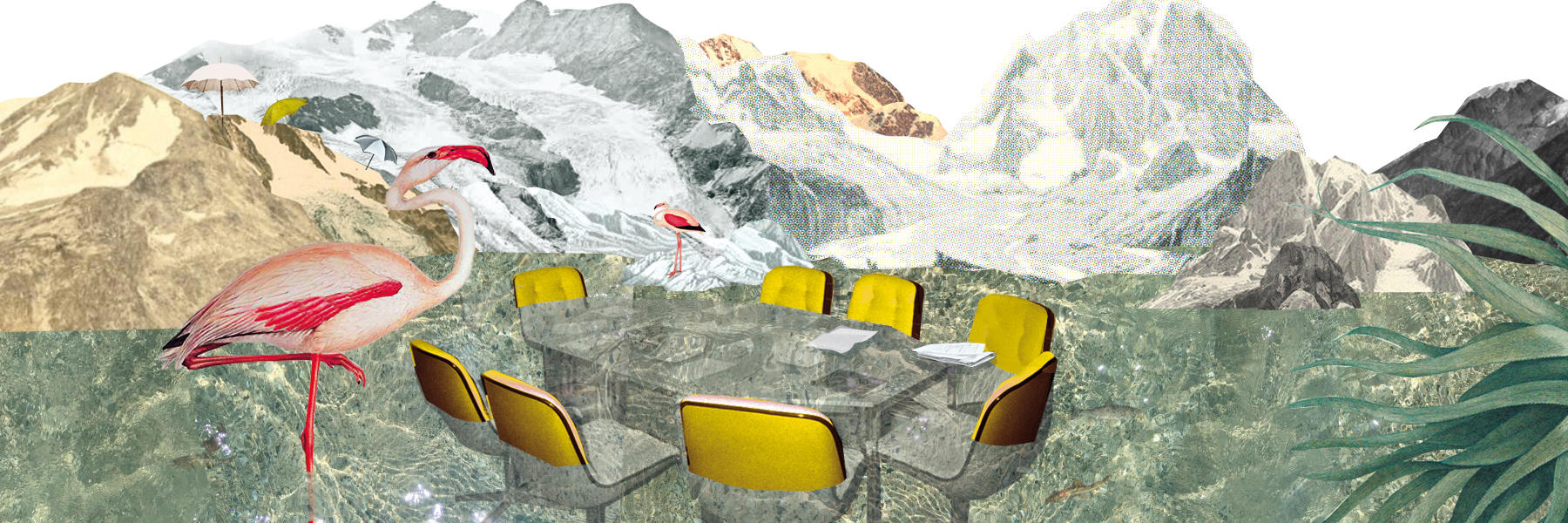
Why melting glaciers affect us all
Glaciers in the Alps and around the world are retreating faster and faster. The consequences of melting glaciers are being felt not only in Switzerland, but all over the planet. The UN International Year for the Preservation of Glaciers aims to raise awareness of the critical role of these “reservoirs of fresh water”.
That glaciers are melting is nothing new: since 1850, the volume of Alpine glaciers has decreased by about 60%. What is surprising, however, is the rate at which the Alpine “giants” and glaciers in all regions of the planet are shrinking.
“The retreat of glaciers is accelerating,” says Daniel Farinotti, a glaciologist at the federal technology institute ETH Zurich and member of the steering committee of GLAMOSExternal link, the Swiss glacier monitoring network.
2025 is the International Year for the Preservation of Glaciers, a UN initiative to promote concrete actions to slow the melting of ice.
How have glaciers in the Swiss Alps evolved?
A study External linkpublished in 2022 concludes that Swiss glaciers lost half their volume between 1931 and 2016 and a further 12% between 2016 and 2021.
>> See how the Gorner glacier in Valais was transformed between 1930 and 2022:
In the hydrological year 2024-2025, 3% of the glacial mass was lost. The melting was helped by heatwaves in June and August and the scarcity of snow over the winter.
Since the pre-industrial era, the temperature in Switzerland has risen by more than 2°C, twice the world average. At this rate, half of the approximately 1,500 Alpine glaciers – including the majestic Aletsch Glacier, a UNESCO World Heritage Site – will disappear by 2050. And if nothing is done to reduce greenhouse gas emissions, all glaciers in Switzerland and Europe could melt almost completely by the end of the century.
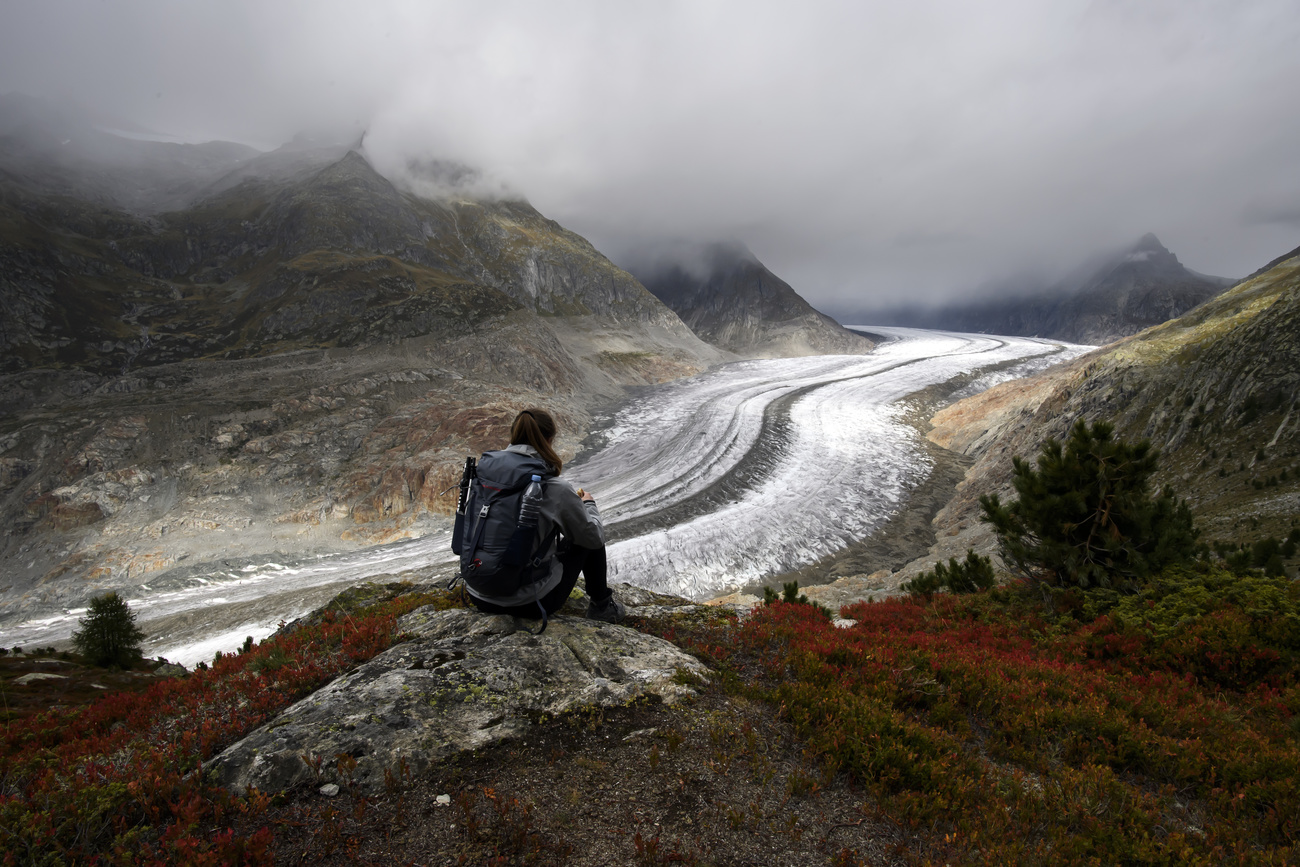
More
‘It’s sad waving goodbye to a dying glacier’
Following the record high temperatures, even at high altitudes, objects and human remains have emerged more frequently in the Alps. In 2022, the wreckage of a plane trapped in the ice for over 50 years was found. These discoveries are set to increase in the coming years, according to Robert Bolognesi, a snow scientist and director of Meteorisk.
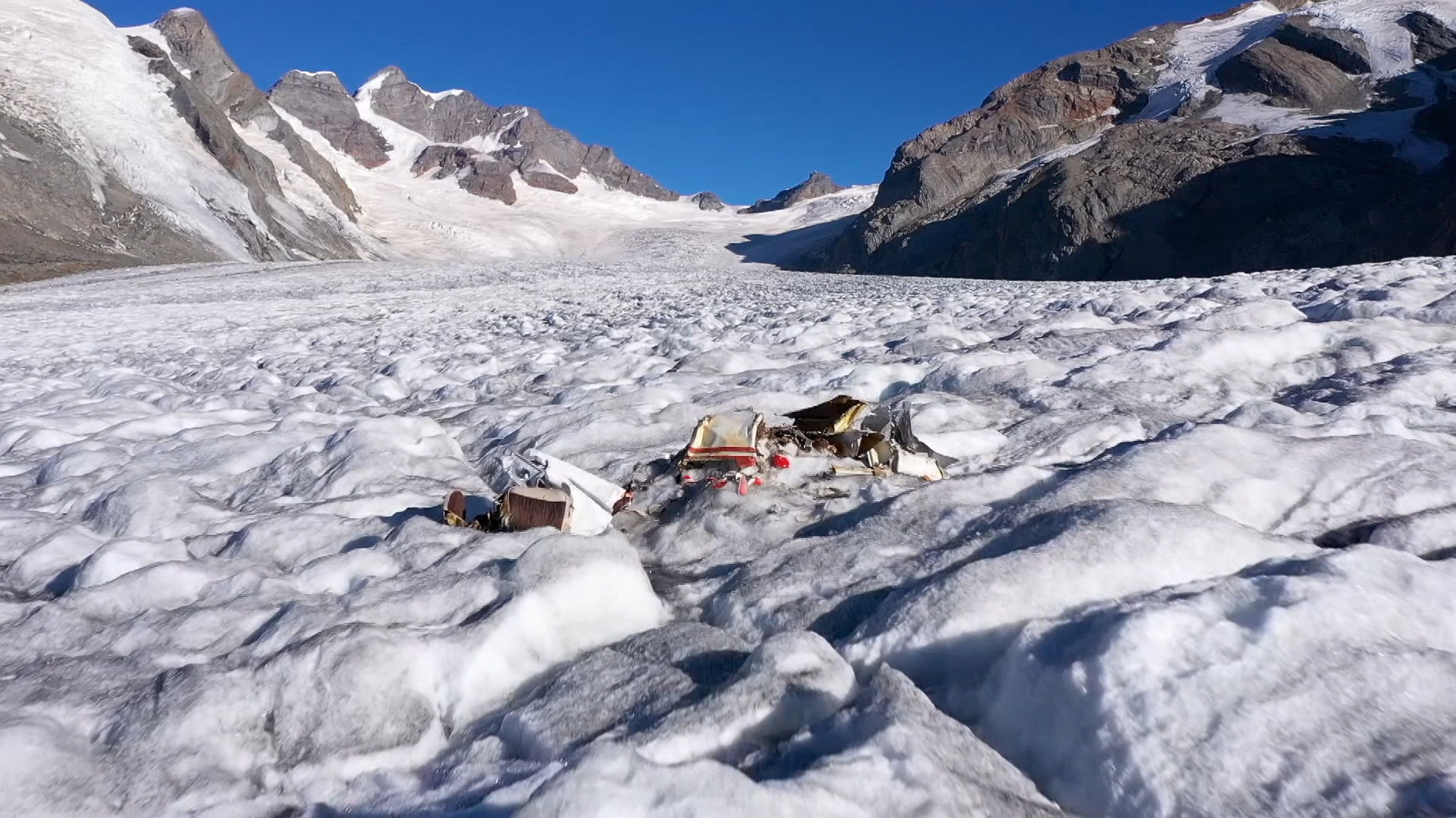
More
More human remains and objects emerge as glaciers retreat
The melting of glaciers caused by global warming releases largely unknown bacteria and viruses into the environment. These microorganisms could help us tackle some major global problems, from plastic pollution to antibiotic resistance.
A research team is studying them for the first time in Swiss glaciers, as our report on the Rhone glacier explains:
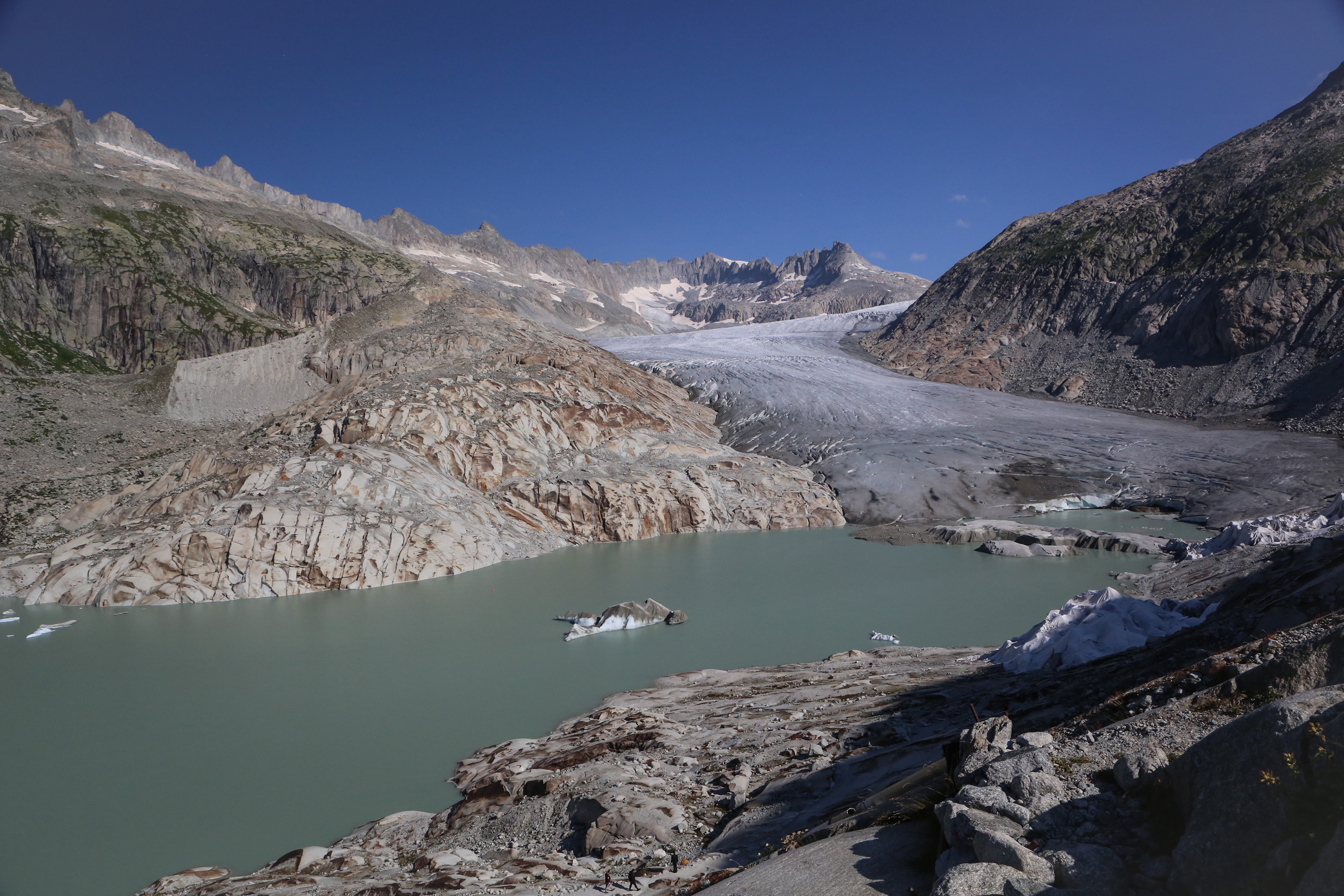
More
Secrets revealed by melting Swiss glaciers could eat plastic and cure disease
What is the situation of the planet’s glaciers?
Glaciers are retreating not only in the Alps. Almost all glaciers worldwide are becoming thinner and losing mass faster and faster.
Between 2000 and 2023, glaciers worldwide (excluding continental glaciers in Greenland and Antarctica) lost more than 5% of their mass, according to a study External linkcoordinated by the World Glacier Monitoring Service (WGMS) and published in February 2024.
Glaciers in Switzerland and the European Alps have been hardest hit: they have lost 39% of their mass since 2000. Glaciers in the Caucasus, North Asia and the United States have also suffered major losses. Melting has not spared glaciers in the polar regions either.
High temperatures accelerated the melting of ice even in regions where glaciers had been inexplicably stable or slightly increasing. A unique phenomenon known as the “Pamir-Karakorum anomaly” and on which a Swiss project wants to shed light.
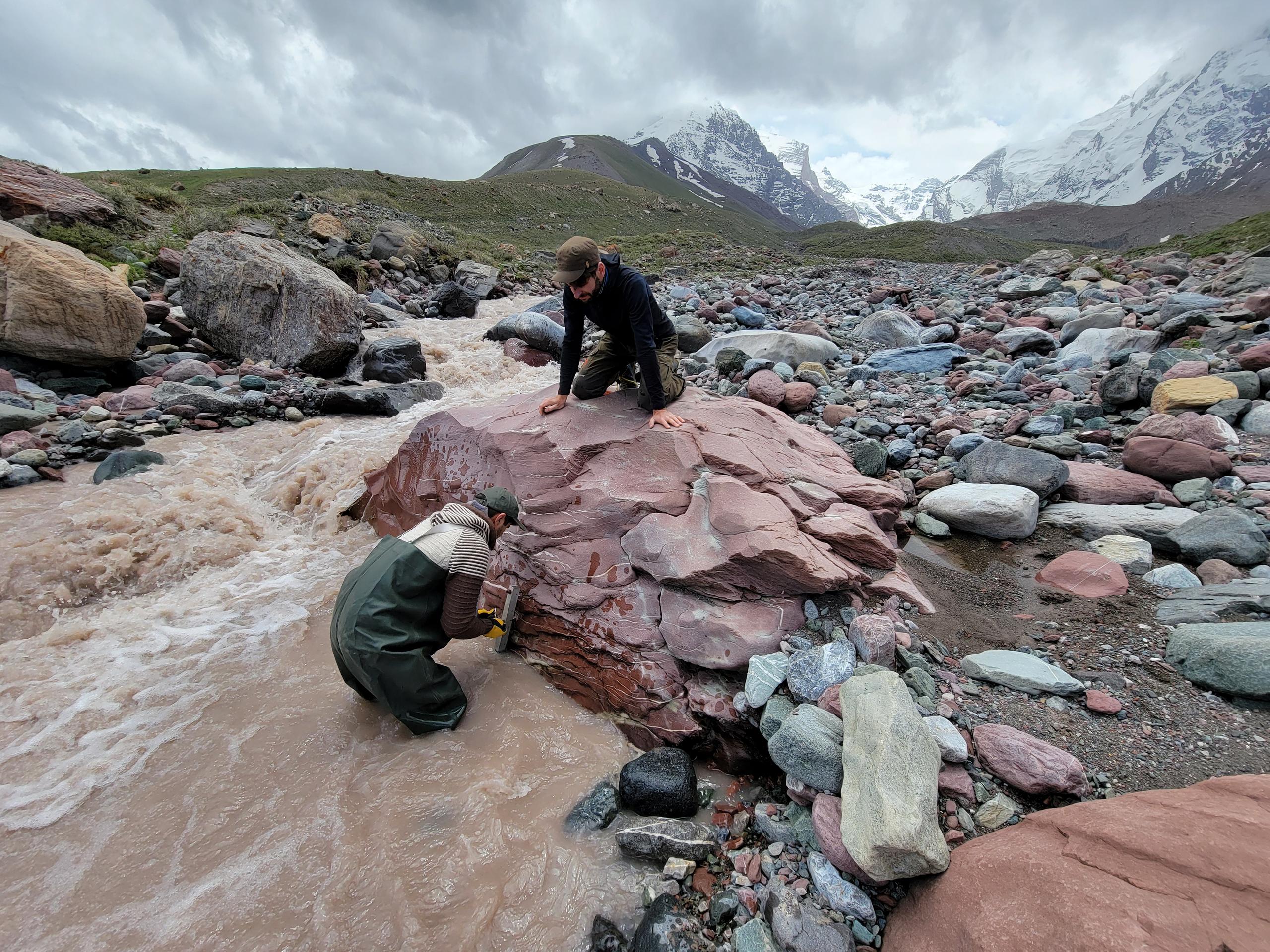
More
Swiss researchers want to unravel the mystery of the Pamir glaciers
How are glaciers monitored?
Switzerland plays a central role in global glacier monitoring.
Since 1986, the WGMS, based at the University of Zurich, has been gathering data on mass changes of a set of reference glaciersExternal link, for which there have been continuous measurements for more than 30 years. These glaciers represent different geographical regions and climatic conditions across the planet.
The monitoring service also collects information on a second set of glaciersExternal link. In total, it looks at more than 130 glaciers in some 30 countries, including about 20 in Switzerland.
What are the consequences of melting glaciers?
Glaciers provide fresh water to more than two billion people. They shape the landscape and contribute to the cultural identity of mountainous countries such as Switzerland or Bolivia. For science, they represent an invaluable source of data on climate evolution.
Their retreat caused by global warming threatens the water supply of downstream communities, particularly in Asia and Latin America, and has negative repercussions for agriculture and hydropower production. Melting glaciers increase the risk of landslides and floods and contribute to sea level rise.
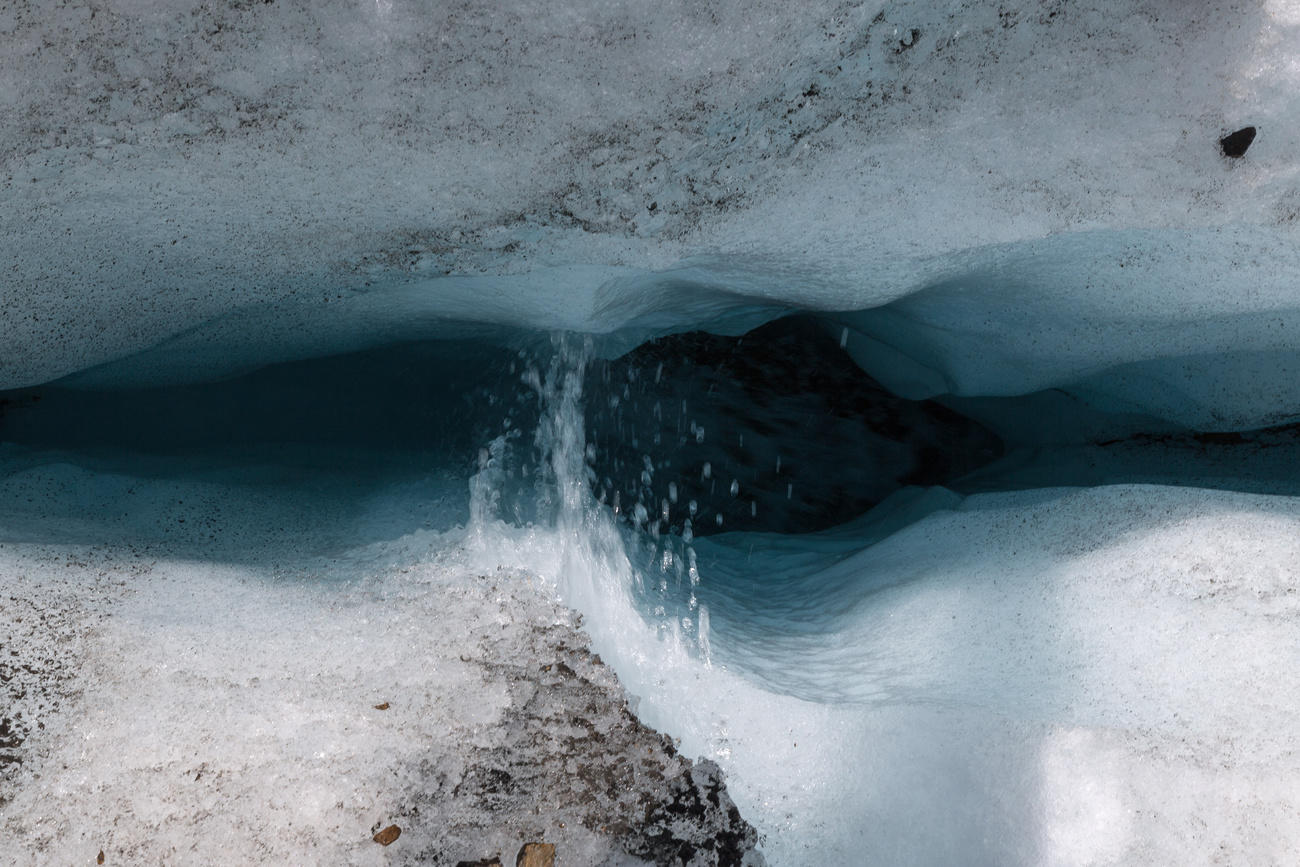
More
Melting Swiss glaciers to fuel conflicts over water
In Switzerland, the melting of Alpine glaciers leads to an increased risk of natural disasters such as floods, debris flows and landslides. The lakes that form inside glaciers risk suddenly spilling downhill, wiping out villages and infrastructure. And with the thinning of the ice and the permafrost layer, the mountains are becoming less stable.

More
Melting permafrost threatens mountain regions. What can be done?
In Switzerland, glaciers that are considered to be dangerous are constantly monitored. In addition to helicopter flyovers and field inspections, researchers use the latest technology. High-resolution cameras, radar, acoustic sensors, ice vibration detectors and satellite images make it possible to record every tiny movement.
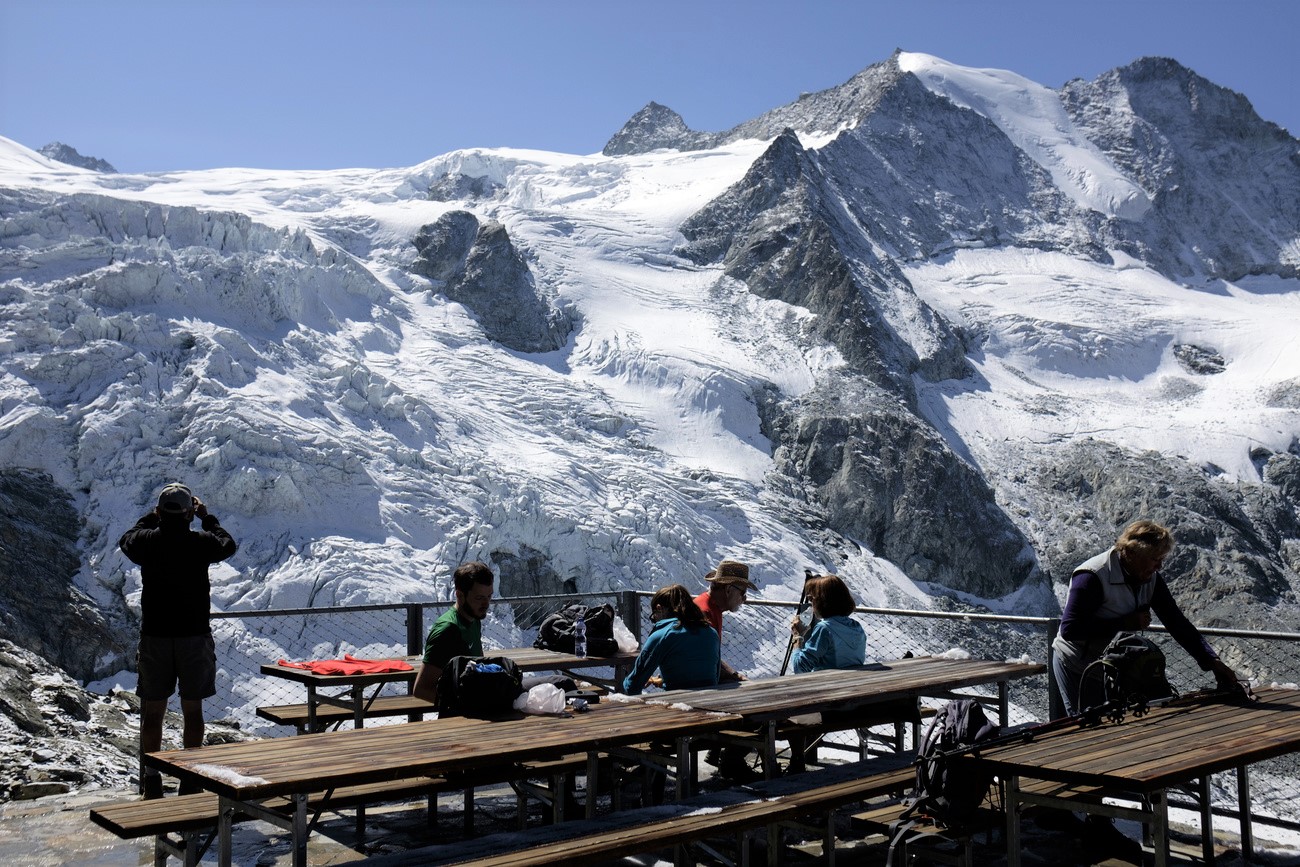
More
Switzerland’s dangerous glaciers under close surveillance
With the melting of glaciers, Switzerland is also losing a major water reserve, estimated to contain enough drinking water for the Swiss population for 60 years.
Of course, Switzerland will continue to have enough water, even if its population rises from the current 8.5 million to ten million in 2050. However, the country is not sheltered from water shortages locally and at certain times of the year.
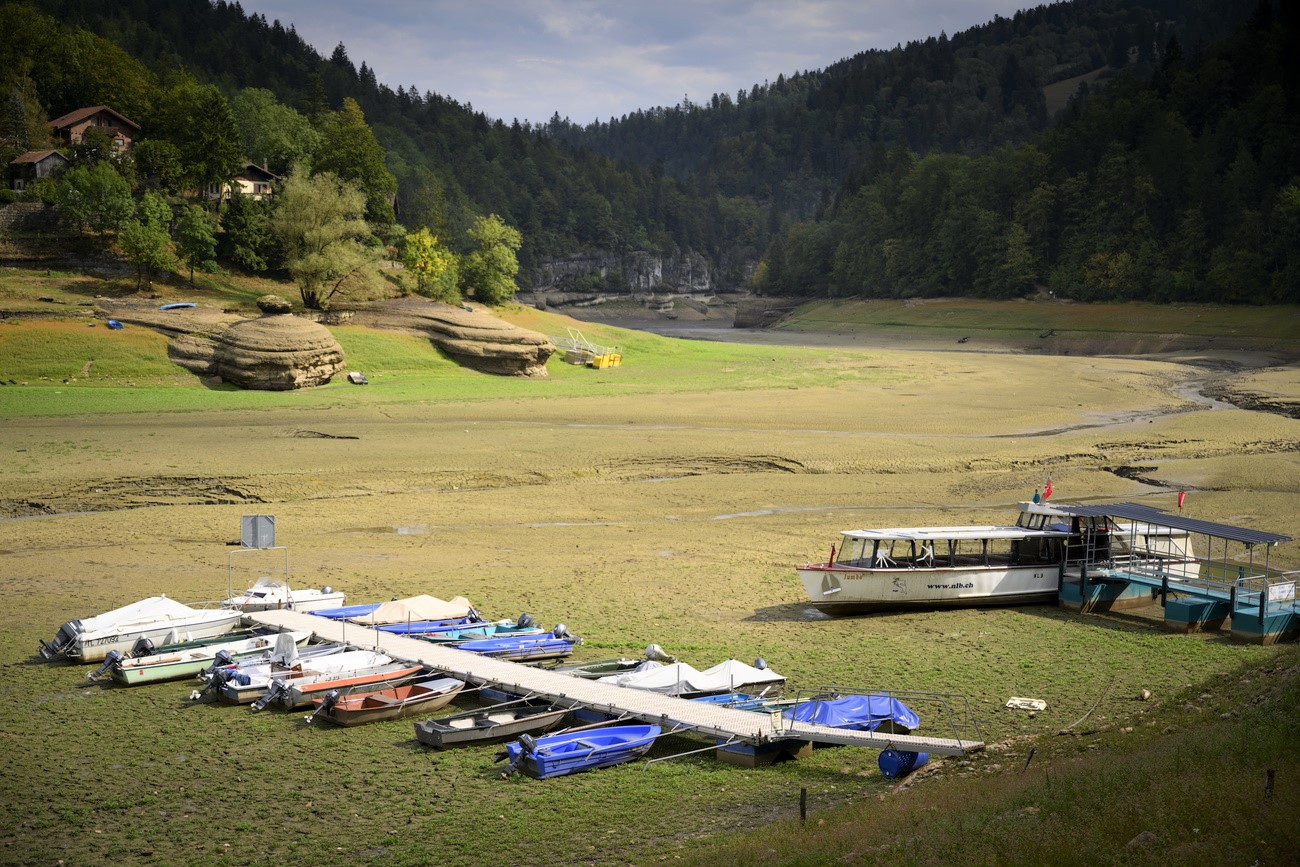
More
Why water-rich Switzerland needs to monitor droughts
The creation of multipurpose storage basins in the mountains, in areas free from ice, could offer new opportunities for hydroelectric production and agriculture. According to a scenario drawn up by the ETH and the Swiss Federal Institute for Forest, Snow and Landscape Research, the complete melting of the glaciers could generate 683 new lakes in the Alps.
In Valais, a project, unique in Switzerland, plans to collect and store snowmelt water in an existing reservoir. The water would then be used during the summer to irrigate vineyards and fields.

More
A Swiss wine village experiments with solutions to water scarcity
The situation in Europe could be more problematic, especially in regions located hundreds of kilometres from the Alps. Due to the lower contribution of melting snow and glaciers, the flow of large European rivers – the Rhône, Rhine, Danube and Po – could decrease considerably in the summer months. The following article illustrates how to reconcile divergent needs to avoid conflicts around water use.
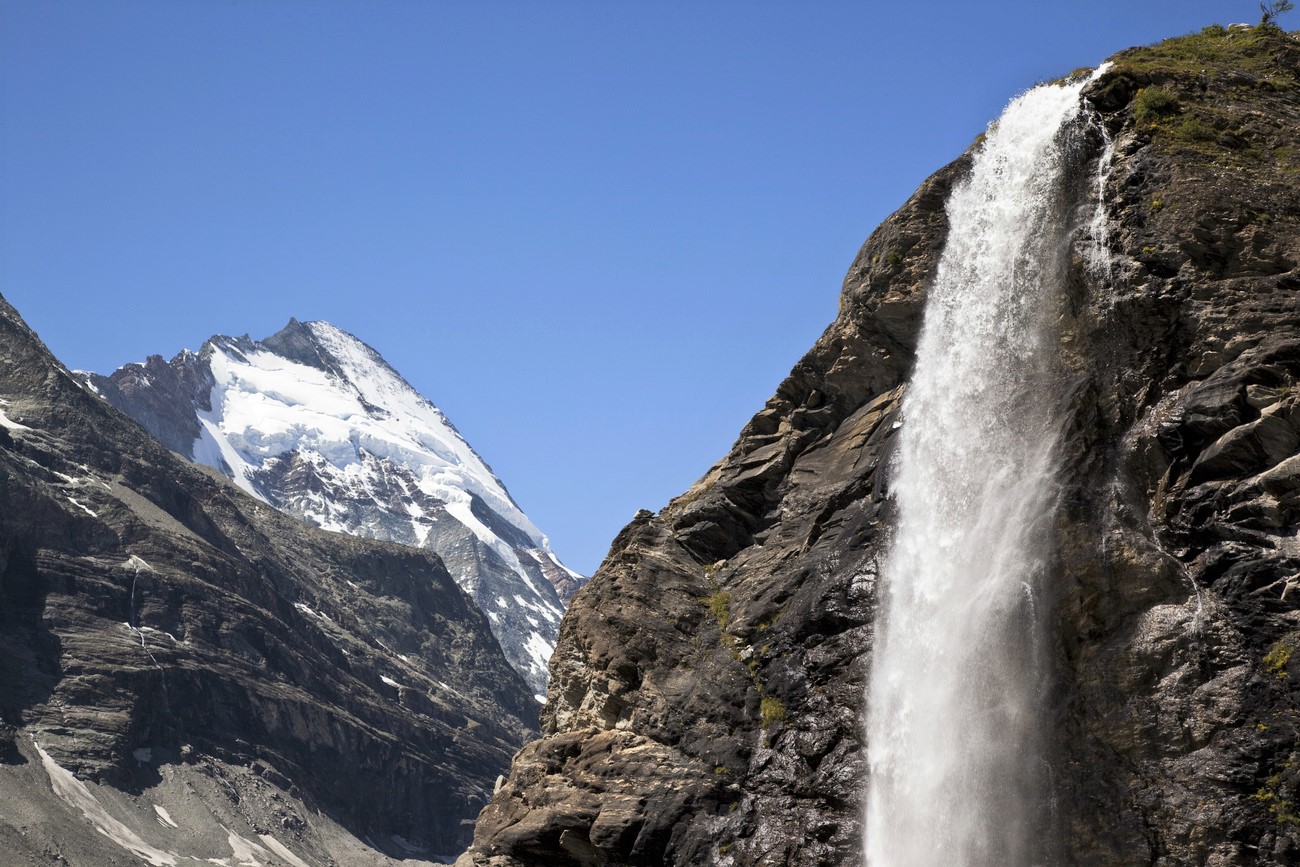
More
How to prevent conflicts over water in the middle of Europe
How to preserve alpine glaciers?
To preserve this heritage of national importance that has helped make Switzerland known worldwide, scientists have undertaken a race against time. On the Morteratsch glacier in canton Graubünden in eastern Switzerland, a project has been launched to protect the glacier with artificial snow; a system that, if successful, can also be used in the Himalayas and the Andes.
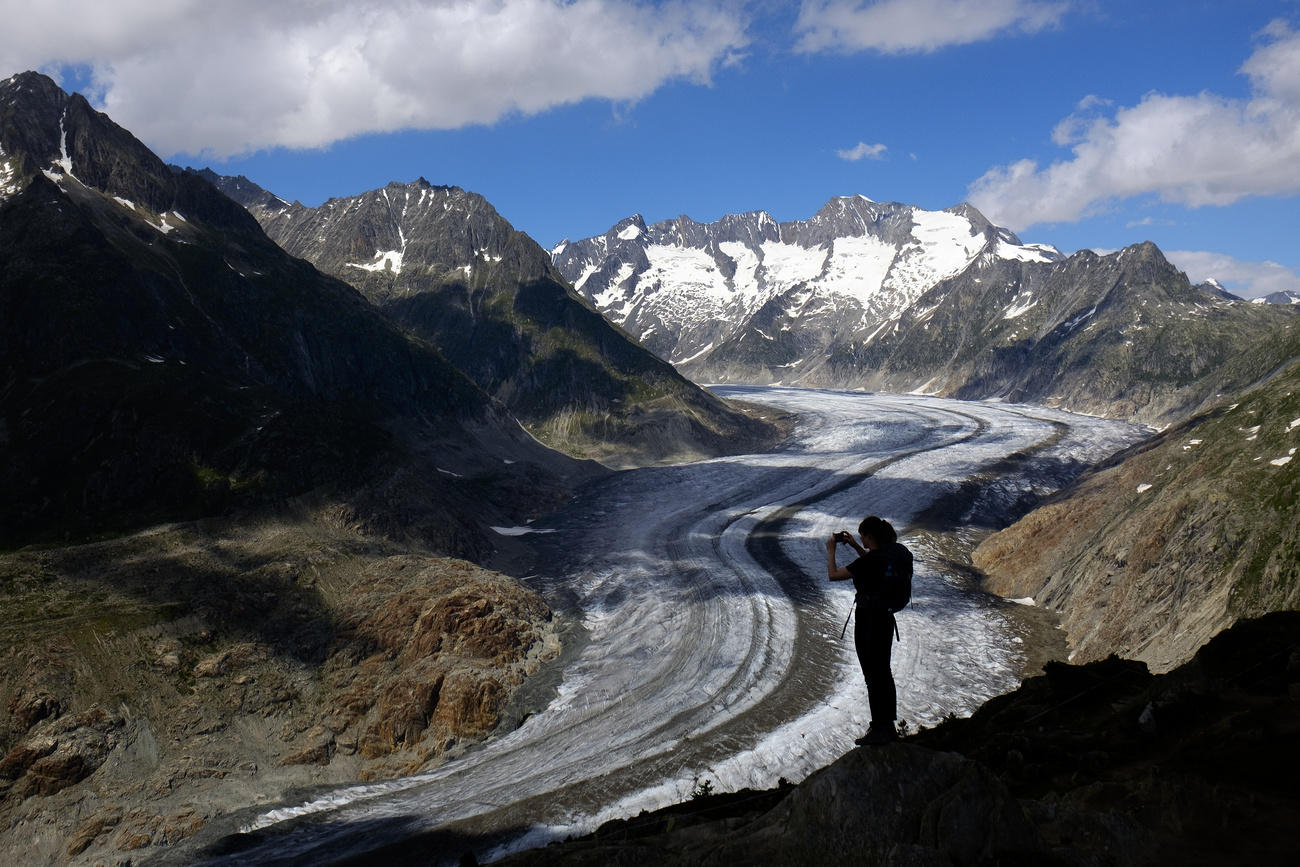
More
Glaciers and the changing landscape in the Alps
In order to slow down the melting of the ice, geotextile sheets are also increasingly used in the Alps. Placed on the glacier, they reflect sunlight and help preserve the snow and ice below. While they can be effective and profitable locally, their wider use is neither feasible nor cost-effective, according to a Swiss study published in 2021.
But science won’t be able to do anything if greenhouse gas emissions continue to rise. In June 2023, the Swiss voters accepted the new climate law that makes it binding to achieve climate neutrality and thus a net zero emissions, by 2050.
Only the end of the era of fossil fuels will make it possible to preserve at least part of the Alpine glaciers, according to Johannes ‘Hans’ Oerlemans, one of the world’s most influential climate researchers.
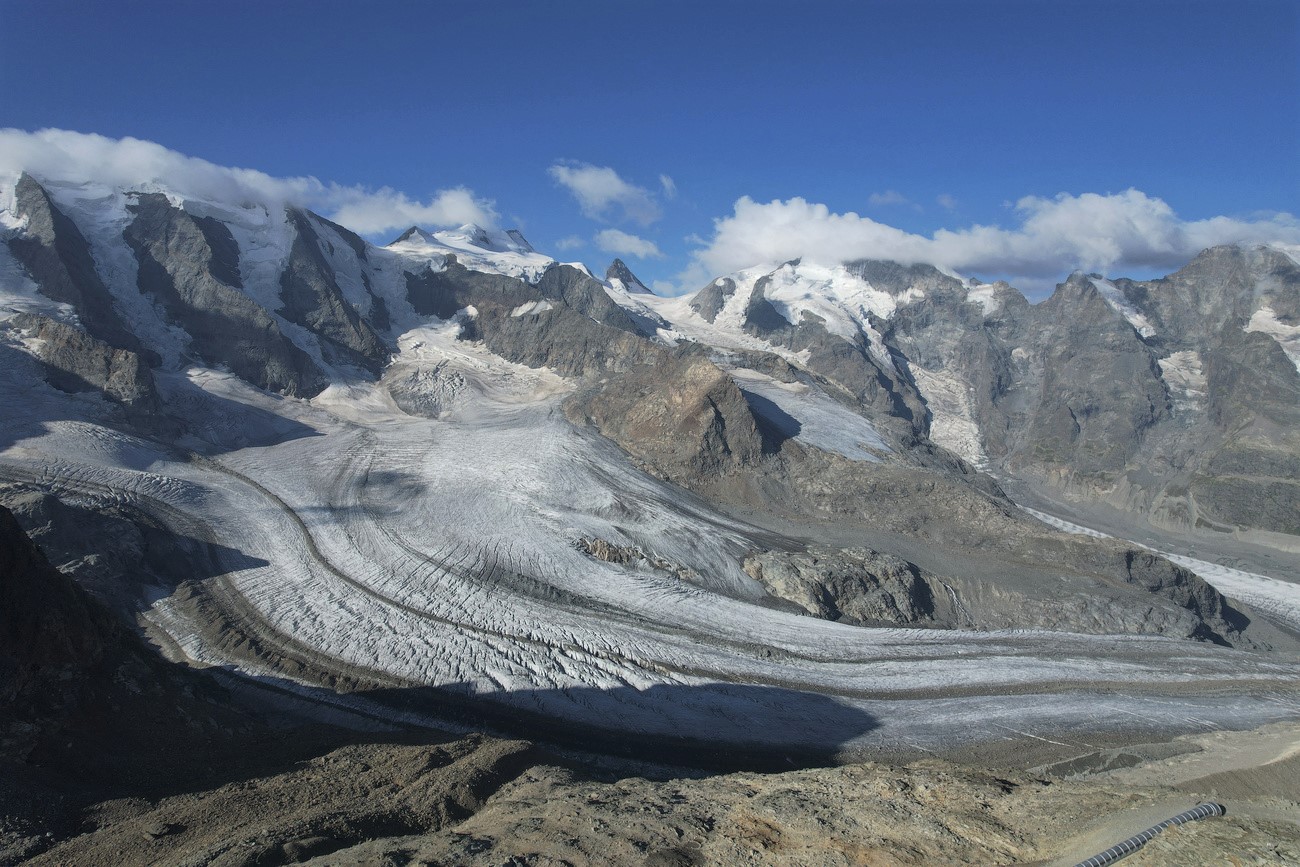
More
‘The only way to save glaciers is to stop global warming’

In compliance with the JTI standards
More: SWI swissinfo.ch certified by the Journalism Trust Initiative
















![The four-metre-long painting "Sonntag der Bergbauern" [Sunday of the Mountain Farmers, 1923-24/26] had to be removed by a crane from the German Chancellery in Berlin for the exhibition in Bern.](https://www.swissinfo.ch/content/wp-content/uploads/sites/13/2025/12/01_Pressebild_KirchnerxKirchner.jpg?ver=a45b19f3)












